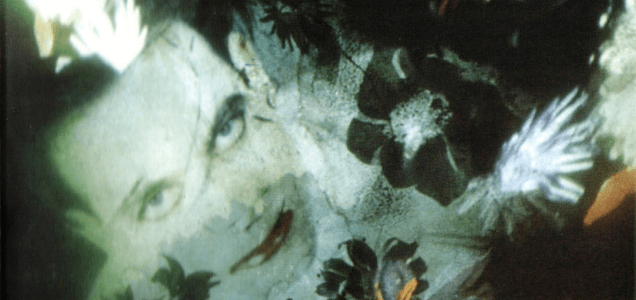
In late 1988 Robert Smith and his bandmates were recovering from the unexpected success of their album, Kiss Me, Kiss Me, Kiss Me, which had brought the band to its highest level of mainstream popularity in their 12 years of existence. The follow up to Kiss Me, Kiss Me, Kiss Me cubed was their eighth album Disintegration, one of the seminal albums of the ’80s. The environment surrounding the making of Disintegration was paradoxical. The band was reaching its apex commercially but was internally at the nadir of their existence.
The Cure would journey through fire, isolation, indulgence, threats of breaking up and finally the dismissal of longtime core member Lol Tolhurst, all happening amidst the recording of the record. Concurrently Smith was attempting to deal with a vast amount of self-doubt and contemplated suicide at the darkest points during the recording. Upon completion, the band would have to fight their record company to release the album as the band envisioned it and not as the watered-down commodity the record executives desired. The trials and tribulations in the recording of this album would ultimately result in The Cure rising like a phoenix from their self-immolation to attain a commercial peak.
The initial recording sessions for the album were going swimmingly except for the “Lol Tolhurst issue” which was the 500lb gorilla in the room no one wanted to confront. With the new album, Smith and the band were looking to respond to the overwhelming success of Kiss Me, Kiss Me, Kiss Me. They created an insular world at drummer Boris William’s country house in Devon to give it a go. The location gave Smith the feel he wanted which was as he stated, “remote, autumnal and British”.
Alarmingly Disintegration at one point almost because of an instrumental record when a fire in the room where Smith had his lyrics satchel caught fire. Smith dodged the flames to save his lyrics. Shortly after this event, the band confronted Smith with an ultimatum that either Tolhurst would have to go or the band would quit. They were fed up with Tolhurst’s substance abuse and lack of contributing to the band.
After a heated fight, Tolhurst left never to return. Roger O Donnell who had played with the Psychedelic Furs would replace Tolhurst on keyboards. Smith himself was falling deeper into a depression, sparked off by a combination of Tolhurst’s descent into substance abuse and subsequent departure, the overwhelming demands of fandom and turning 29. Smith feared that his chance to write a masterpiece would dry up after turning 30 and time was running out. He did not want to return to the pop confection he felt was Kiss Me, Kiss Me, Kiss Me and wanted something more introspective and dark like their earlier album Pornography. Smith began to intentionally distance himself from the band as he started to record the lyrics for the album. He took himself off with Co-Producer David M. Allen and did the songs and overdubs alone.
Disintegration was eventually completed at Hookend Recording Studios in Checkendon, Oxfordshire. The album was Co-produced by Robert Smith and David M. Allen with Richard Sullivan and Roy Spong engineering. Over the years some have suggested that Disintegration is really a Robert Smith’s solo project. Smith has always rebutted the claim stating that all the members of the band contributed significantly to the sound and feel of the album, including Tolhurst who was credited with the flute sample on Homesick.
Upon the playback of the finished album, the band knew they had a remarkable record. Fiction their record company did not agree. Fiction kept delaying the release date and sent a letter to Smith stating that the record as recorded was commercial suicide for the band. They accused Smith of being willfully obscure. The record executives pushed for a more radio-friendly sound, but the band stayed committed to the songs and the album in its original form. The album was finally released “as is” on May 2, 1989, and in a short period of time, the band was vindicated. Disintegration would go platinum in the US, #3 in the UK, spawning four hit songs, and win Best British video of 1990 for Lullaby at the Brit Awards. The Prayer tour to support the album would play in NYC Giants stadium and LA Dodger stadium to packed crowds. The gamble taken on the album would give The Cure their masterpiece. Today Disintegration is a perennial on numerous best of best lists. In addition Disintegration’s success set up the band to endure the end of the century implosion of the record industry.
What made the record the masterwork many today consider it to be? It was a magical alloy. The amalgam of Smith’s vocal performance with its steely calm and incendiary flashes of dread combined with Boris Williams inspired drumming, Porl Thompson’s swirling droning guitar work, Simon Gallup’s commanding bass, and the flare of Roger O’Donnell’s apt synths and piano. All of these multiple layers created an astonishing album. The Cure’s two prior albums before “Disintegration” had a scattered feeling. In contrast, Disintegration is pure concentrated emotional grandeur. Among the many reasons it became so popular was its ability to accompany whatever emotion you were feeling. The album was in turns beautiful, horrible, sardonic, sublime, seething, morose, wistful and ghostly. Each of the songs reaches down into the listener with a directness that could never be forgotten. It was an album that demanded your full attention. None of the songs could be accused of being short, but as a listener you found yourself wishing they would never end.
Initial listeners reading the liner notes found this notice, “This music has been mixed to be played loud so turn it up.” For me and numerous others, Mr Smith’s wish was our command. Few 80’s albums could boast as grand a start as Plainsong with its breathtaking shimmering intro. The discordant wind chimes and heavy plodding, deep droning guitar effervescently exploded out of the speakers. In a few notes, all doubts about this album were laid to rest. Plainsong is a swirling cathedral of a song. Smith’s spellbinding delivery was a perfect mixture of yearning and effect. Pictures of You segues perfectly from Plainsong. It is slightly lighter in feeling but just as plaintive. The crystalline feeling of the song provides a pure rush of crisp iceberg coolness. Smith eloquently paints the picture of the shard of ice being forever placed in the heart of a broken lover. “…remembering you have fallen into my arms crying for the death of your heart… If only I’d thought of the right words I could have held on to your heart if only I’d thought of the right words I wouldn’t be breaking apart all my picture of you.”
Closedown is the song that gets the closest to illustrating Smith’s dark depression. It alludes to the period during recording when he shut everyone out as he faced his demons. The song ends with his lament “if only I could fill my heart with love.” The song is a percussion explosion with apt use of layered vocals. It is majestic, swirling and arresting.
Love Song as fans of the Cure know was written as a wedding present for Smith’s wife Mary. It is the most lighthearted moment of the record, occurring at the perfect moment in the playlist when things were getting a bit too maudlin. Smith said about Lovesong “that it had taken him 10 years to get to a point where he felt at all comfortable sing a straightforward love song”. The synth and guitar accompaniment perfectly sets the mood of the song. Lyrically Smith lists all of his issues and how being alone with Mary fixes them. “However far away I will always love you.” No surprise that the song has endured in popular culture years after its original release.
Last Dance is a weak song lyrically to me. The music, however, more than compensates for any disappointments lyrically. The song unfurls over a wide soundscape conveying all the emotion of its intent. The subject matter deals with the timeless betrayal of growing up and away from childhood love.
Ahh, Lullaby I have loved this macabre song since the first time I heard it. The slow waltz-like track with its terrifying nightmare imagery is done with such innocent relish, that it is no surprise it went to #5 on the US charts. The song was inspired by Smith’s father who used to sing lullabies that were a little twisted to young Robert. It belongs in the gothic pantheon with Addams family cartoons and Edward Gorey’s The Gashlycrumb Tinies, resplendent in all its creepy glee. This was also a song so rich in imagery it made the easy translation into a captivating award-winning video.
Fascination Street is a spine-tingling pop song. The screaming guitar at the intro and loaded beat gave every indication that the band had not forgotten how to write a radio-friendly song. Smith stated that the song was inspired by the club scene at the time on Bourbon Street in New Orleans. The musical accompaniment is satisfying and again Smith is pitch-perfect with his delivery. The best lyric is, “Because I feel it all fading and paling and I’m begging to drag you down with me to kick the last nail in.”
Prayers for Rain This song along with Same Deep Water as You created a dyad of powerful emotion. The two songs for me are the emotional backbone of the record. The droning guitar, glistening piano and keyboards build to this amazing crescendo. There is a counter positioning of the escalation in the sound to the descent of the dark lyrics. It is atmospheric and hypnotic. The desolation inspired by Smith’s fears of failure and ageing are crystal clear and painful. “You stifle me, infectious sense of hopelessness and prayers for rain.”
And just as you think it can’t get any darker the paradoxical soul-cleansing of Same Deep Water as You gloriously unreels. Drowning never sounds so painless. “Same Deep Water” is an ode about unattainable yearning for the melancholy golden past, as sirens singing you to your doom and the reaper beckons. Smith’s striking portrait of death, that some say were the ultimate self-indulgent mope, is something more transcend. The majestically moody ambience makes for the most mesmerizing song on the album. It is the climax of the disc.
Disintegration is like coming out of the dream woven by Same Deep Water. Here Smith is facing all the neurosis and fear of his life. On display are all the treachery, greed, duplicity, depression, abandonment, lovelessness and death that were haunting him throughout the recording sessions. Spelt out in the lyrics “Songs about happiness, murmuring in dreams, when we both of us knew how the end always is …Now I know that I’m breaking to pieces, I’ll pull out my heart and I’ll feed it to anyone, crying for sympathy…” He feared that any happiness was momentary and his neuroses would always remain. Yet Smith names the solution to his dilemmas, “…The need to just let go of my party piece.” The song has an oriental feeling; with its wonky keyboard, pulled around percussion and excellently attuned guitar. The song ends with the lyric “how the end always is” is aptly reinforced by the sounds of breaking glass, a possible symbol of Smith’s fragile mental state.
Homesick is a great gothic ballad, with Smith at his most wounded. He delivers a lyric full of raw emotion. He delivers his heart to the listener in this song. An evocative poem of angst over having attained the things you dreamed of, only to find they have turned to dust in your hands. “The everything you win turns to nothing today.” The deft musical performance slowly unwinds, as it drifts and sucks you into the black hole of the lyric.
The final track, Untitled is the most unadorned on the album. The sound is also more upbeat than the lyrics. Williams shines on drums as the organ drifts off into the ether. The lyrics convey that Smith is still searching for perfection, but that it is always an endless journey. “And now the time has gone, another time undone… I’ll never lose this pain, never dream of you again.” The song is a farewell to the album.
All of Smith’s fears that he would never produce a masterpiece could be laid to rest with the creation of Disintegration. It stands as his magnum opus. The group would go on to produce other stellar albums, the next album Wish achieved even great commercial success, but as Kyle Broflovski of South Park said,” Disintegration is the best album ever.”
The Cure’s lineup has remained fairly intact and as ever amazes live. For the curious and fans who have not availed themselves, I will refer you to the live concert disc of Disintegration, Entreat Plus as evidence of that fact. There is some merit to the belief held by many that the band has never received all the accolades they so richly deserve. There has always existed some slighting by critics and award-givers throughout the band’s career. Yet to this day the band has remained groundbreaking and risk-taking even when popularity and commerciality have veered away from their later output. In the end, there is one word that describes Disintegration – Masterpiece.





Be the first to comment